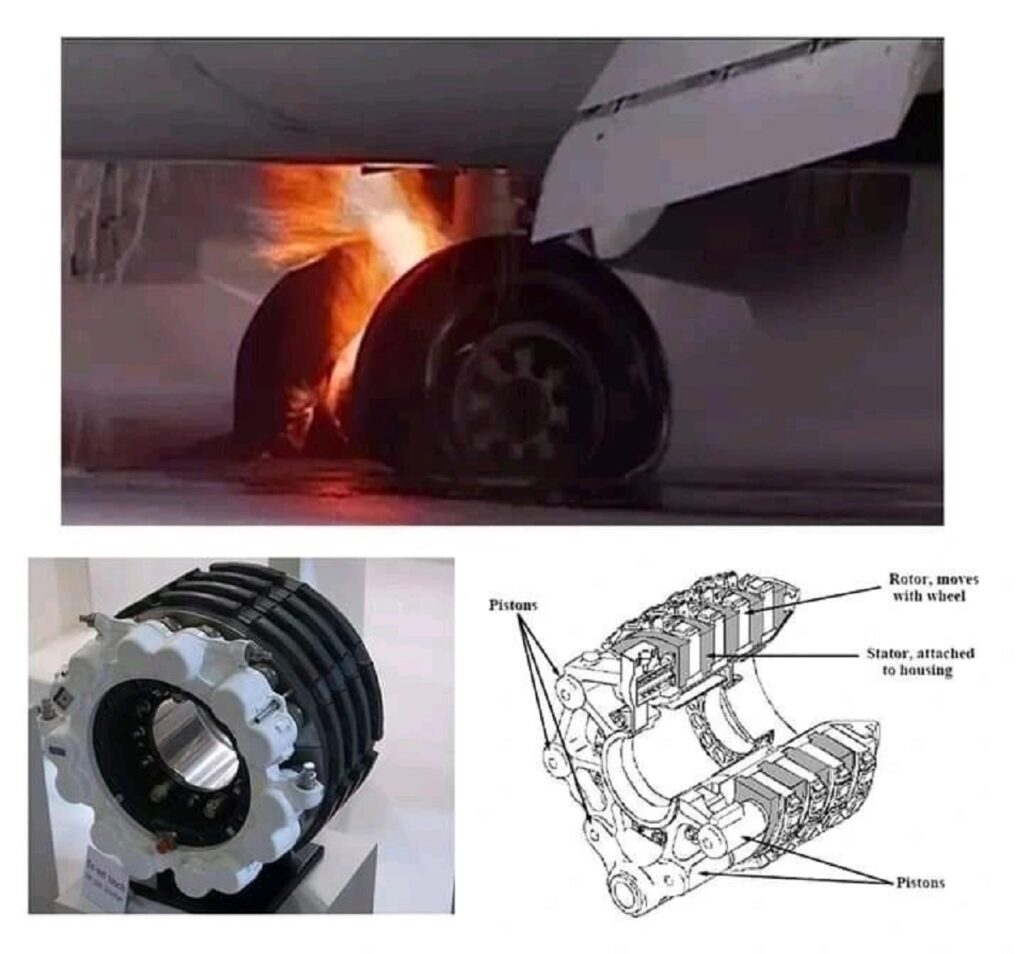
An airplane’s wheel brakes are simply friction devices that are usedby the pilotto deceleratean airplane. By pressingon the brake pedals in the cockpit, the pilot causes pressure to be appliedto a ringof hydraulic pistons on the brakes. These pistonspress together a “stack” of rotating brake disks (“rotors”) and non-rotating brake disks (“stators”). The friction thus caused betweenthe rotorsand statorsabsorbs the airplane’s kinetic energy, slowing it.
But the kinetic energy doesn’t simply disappear– instead, the brakes turn it into heat. Should that heatenergy exceed a safe level, brakeand tire failure are possible, and landing gear fires can occur.
For this reason, it isn’t permitted to make a rejected takeoff under conditionsin which the brake application speed would exceed a safe value, called VMBE, the speedfor maximum brake energy.
The speed VMBE is simplythe maximum takeoff speed, for a given amountof airplane mass, at whichthe brakesmay be appliedin the eventof a rejected takeoff without exceedingthe brake energy absorption limitations. It assumesthat the pilot applies the maximum manual brake pressure.
Author – Zinhom Mahmoud
Aviation Training Consultant





